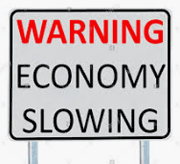| |
|
| |
|
 |
Supply
Chain by the Numbers |
| |
|
| |
- Aug. 9, 2019 -
|
| |
|
| |
|
| |
|
| |
China Now Lowers Value of Its Currency; Increasing Number of Economists Smelling Recession; Amazon Appeals for Drone Exemptions; Not Much Gap between Intermodal and Trucking Costs |
| |
|
| |
| |
| |
| |
7.1087 |
|
That is about the current value of the Chinese Yuan currency versus the US dollar – meaning about 7 Yuan will get you one greenback. That puts the Yuan at is lowest value against the dollar ever. China is believe to be pushing the value of its currency down to counteract the impact of US tariffs on Chinese imports, which obviously raise the costs of Chinese-made goods. China's central bank said this week the depreciation was "due to the effects of unilateralist and trade-protectionist measures and the expectations for tariffs against China." All that in turn led the US Treasury to officially label China a currency manipulator, allowing the US to take even more measures of Chinese trade. However, Chinese authorities will be reluctant to allow the Yuan to depreciate much further. Continued sharp declines in the currency could stoke capital outflows and make it difficult for local companies to service their dollar-denominated debt. Who knows where this will end. |
|
|
| |
| |
|
|
|
That is all the savings that US shippers realized roughly in the past year from going intermodal – combining rail movement with trucking on each end of the trip – versus just using truckload carriage. That is the lowest savings level in the past five years, according to the analysis by the Journal of Commerce across 115 shipping lanes. That's a problem, because shippers use intermodal because while it is slower and less flexible, it's cheaper than truckload carriage – but now apparently not by much. The estimate, however, is based on spot market rates. Although JOC hasn't launched a contract intermodal index, it says the preliminary data shows contract rates were about 20 to 25% cheaper in 2018 but just 10 to 15% this year. The majority of intermodal loads travel under contract. The JOC says the Los Angeles to Chicago lane is an example of how the market has shifted. The Intermodal Association of North America (IANA) reports more than 50,000 loads move in this lane per month. Truck rates, though, were cheaper than rail rates between January and April 2019, which made it difficult for intermodal marketing companies to sell a slower service. |
| |
| |
|
| |
| |
$35% |
 |
That is the share of economists just surveyed by investment firm Macrofin Analytics who expect a recession in the next 12 months. That's up a bit from the 31% that felt that way in the survey before that, as global trade tensions fuel economic uncertainty. Growth in the US will average 2.3% this year, the economist collectively predict, down from the 2.5% growth seen in a July survey. Gross domestic product expansion is forecast to slow to a 1.8% annualized pace in the third quarter, from 3.1% in the first three months of the year and 2.1% in the second quarter. But do not yet despair – employment growth and consumer confidence remain strong, and it is quite possible that after a short period of flatness the US economy could start rallying again. And 2.3% growth is not great – but also far from recessionary.
|
| |
| |
| |
| |
| |
|
|
|
| |
 |
 |
| |
|
|
| |